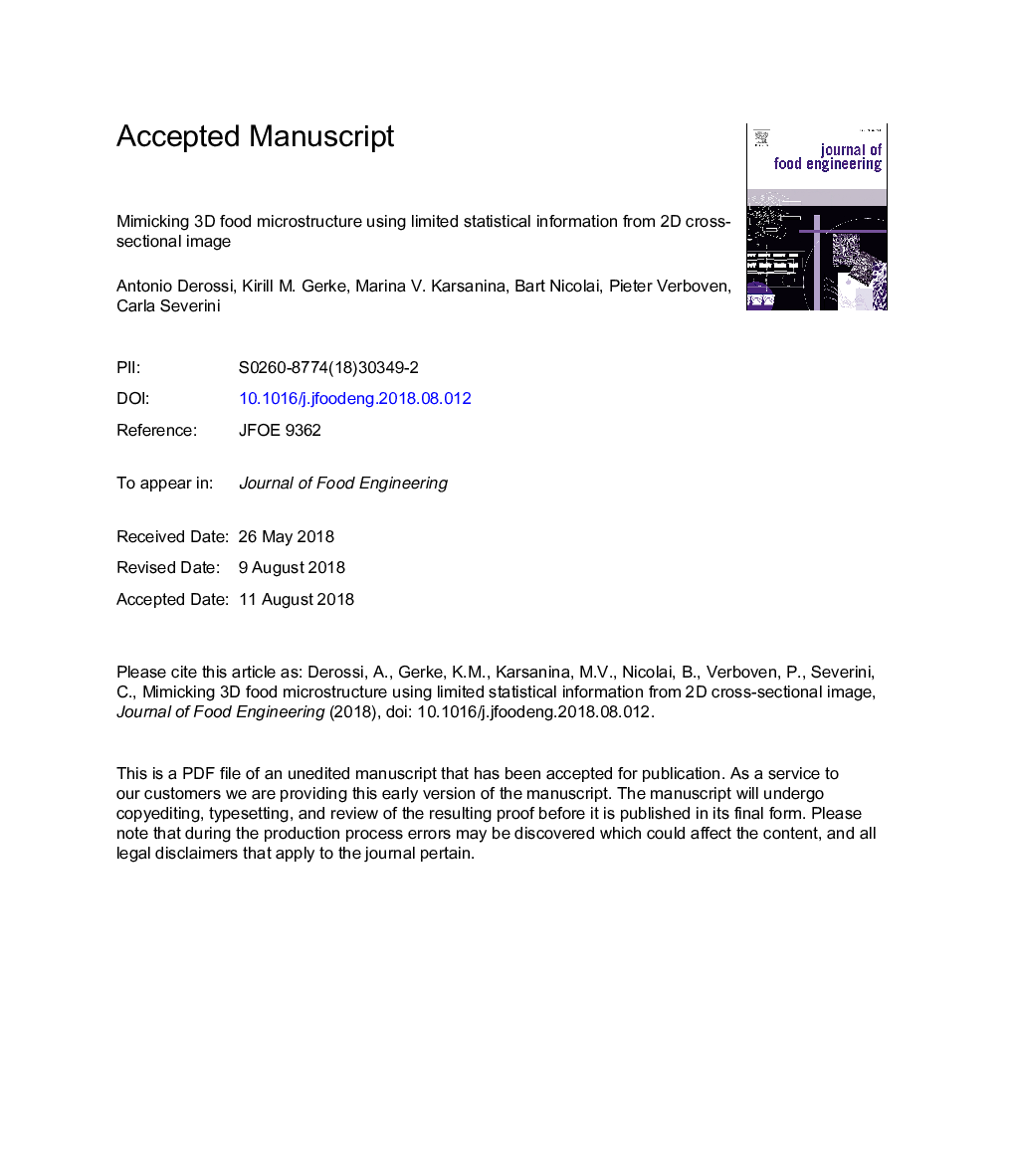| Article ID | Journal | Published Year | Pages | File Type |
|---|---|---|---|---|
| 11000695 | Journal of Food Engineering | 2019 | 32 Pages |
Abstract
We used statistical correlation functions (CFs) to describe food microstructure and to reconstruct their 3D complexity by using limited information coming from single 2D microtomographic images. Apple fleshy parenchyma tissue and muffin crumb were chosen to test the ability of the reconstructions to mimic structural diversities. Several metrics based on morphological measures and cluster functions were utilized to analyze the fidelity of reconstructions. For the apple, reconstructions are accurate enough proving that lineal, L2, and two-point, S2, functions sufficiently describe the complexity of apple tissue. Muffin structure is isotropic but statistically inhomogeneous showing at least two different porosity domains which reduced the fidelity of reconstructions. Further improvement could be obtained by using more CFs as input data and by implementation of the techniques dealing with statistical non-stationarity. Novel stochastic reconstruction and CF-based characterization methods could improve the fidelity of reconstruction and future advances of this technology will allow estimating macroscopic food properties based on (limited) 2/3D input information.
Related Topics
Physical Sciences and Engineering
Chemical Engineering
Chemical Engineering (General)
Authors
Antonio Derossi, Kirill M. Gerke, Marina V. Karsanina, Bart Nicolai, Pieter Verboven, Carla Severini,
